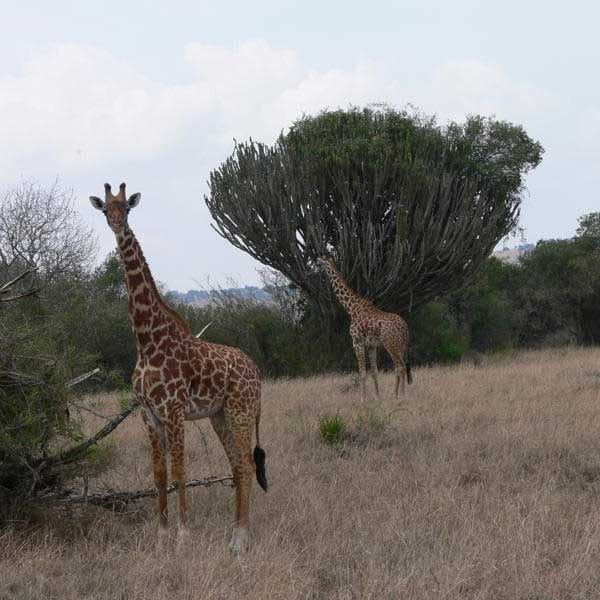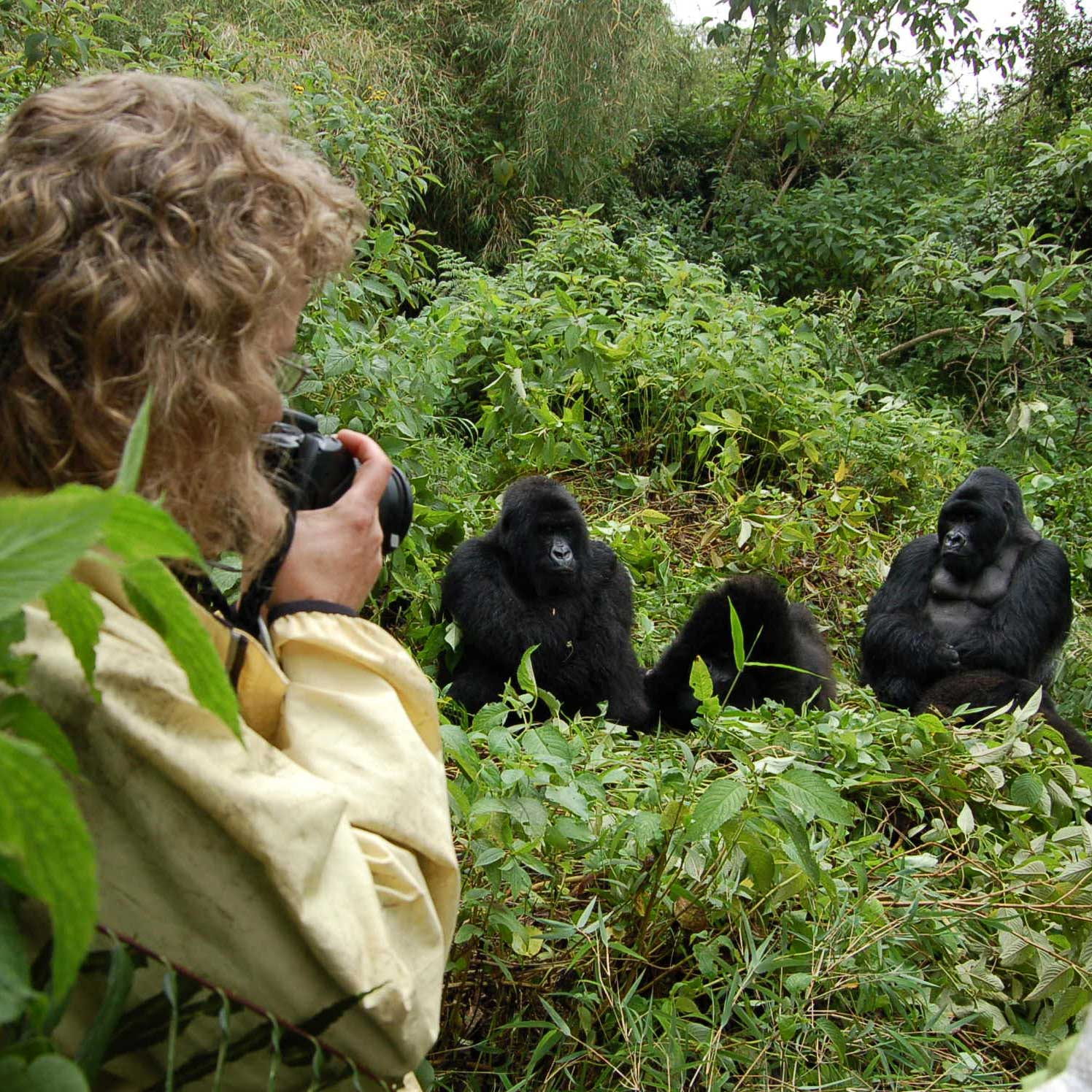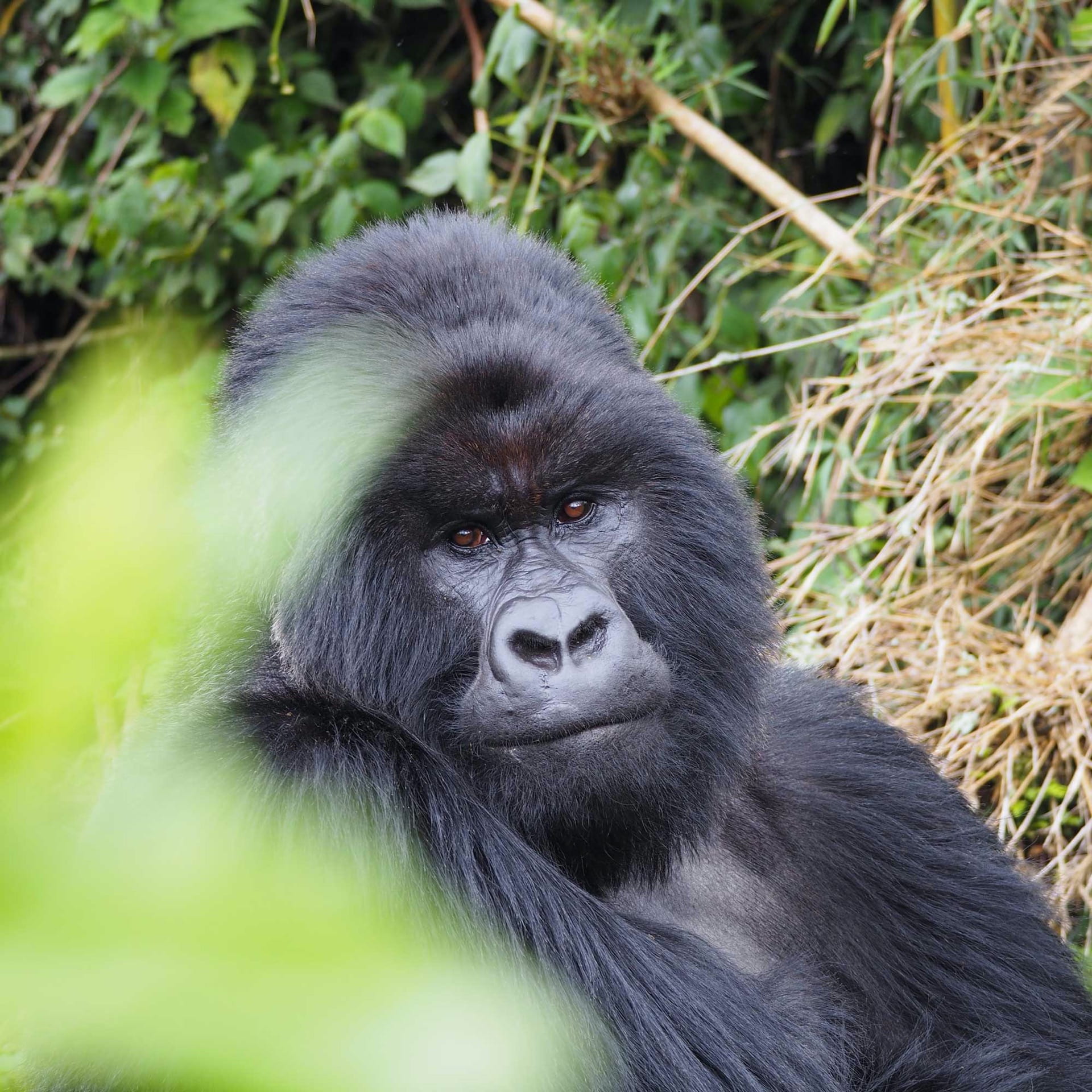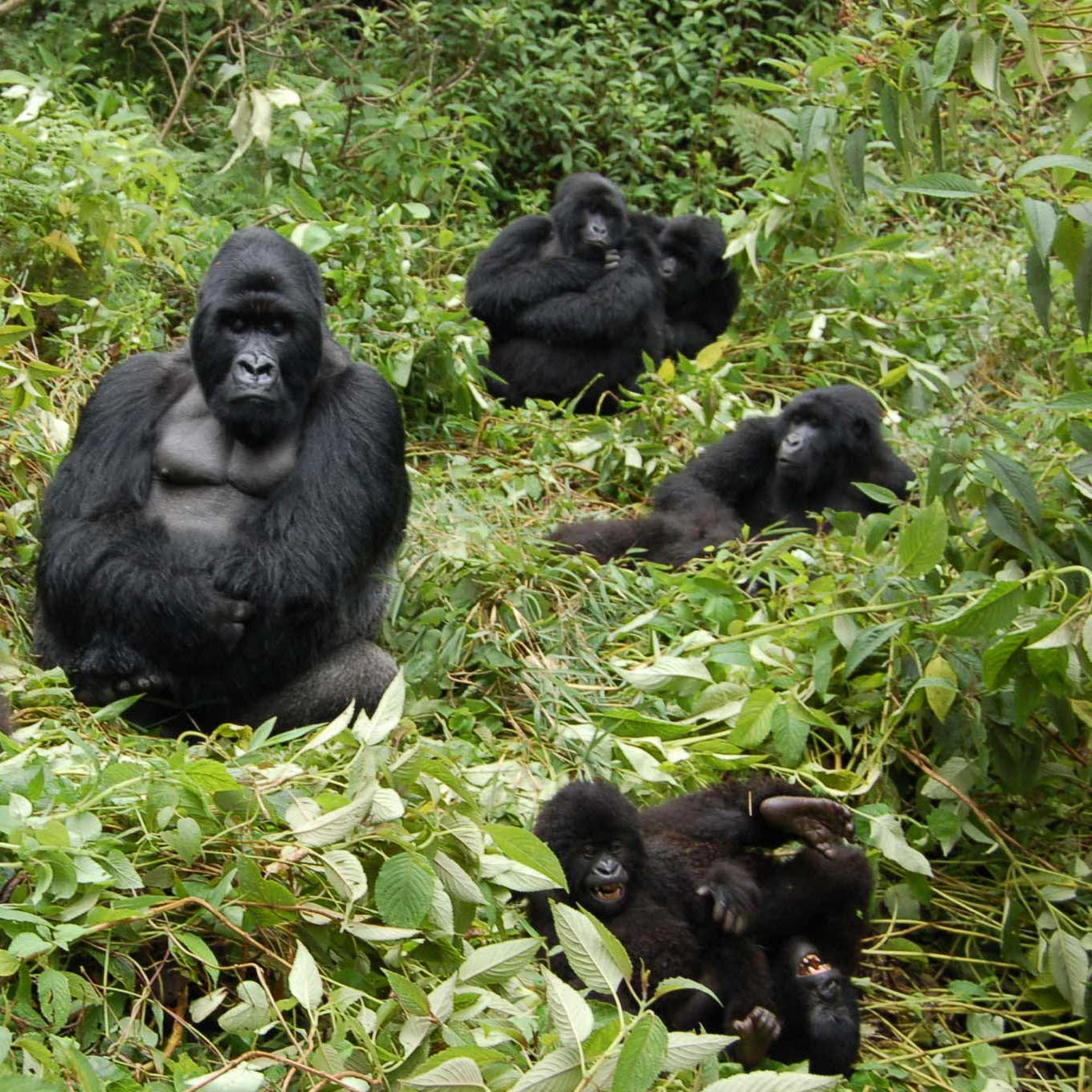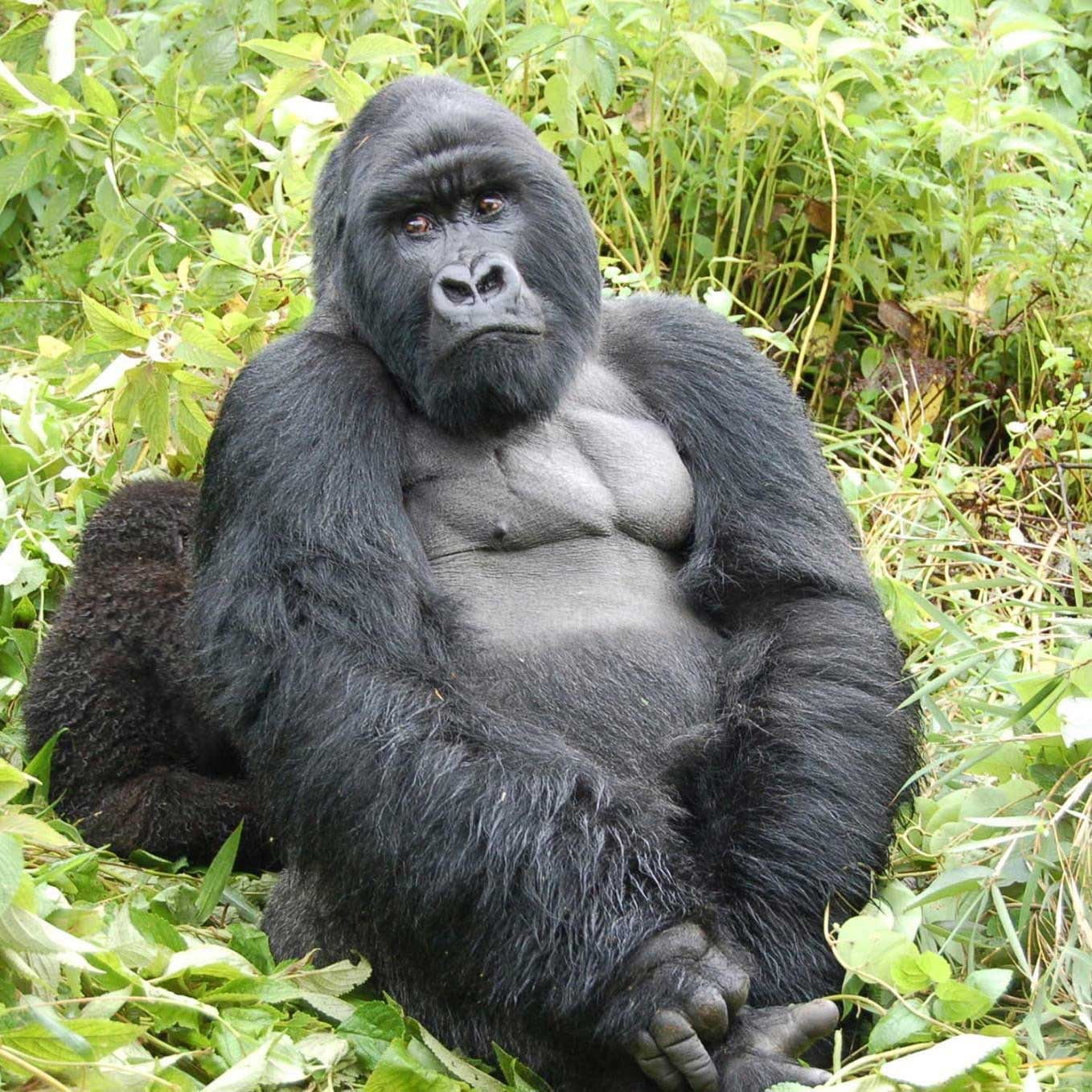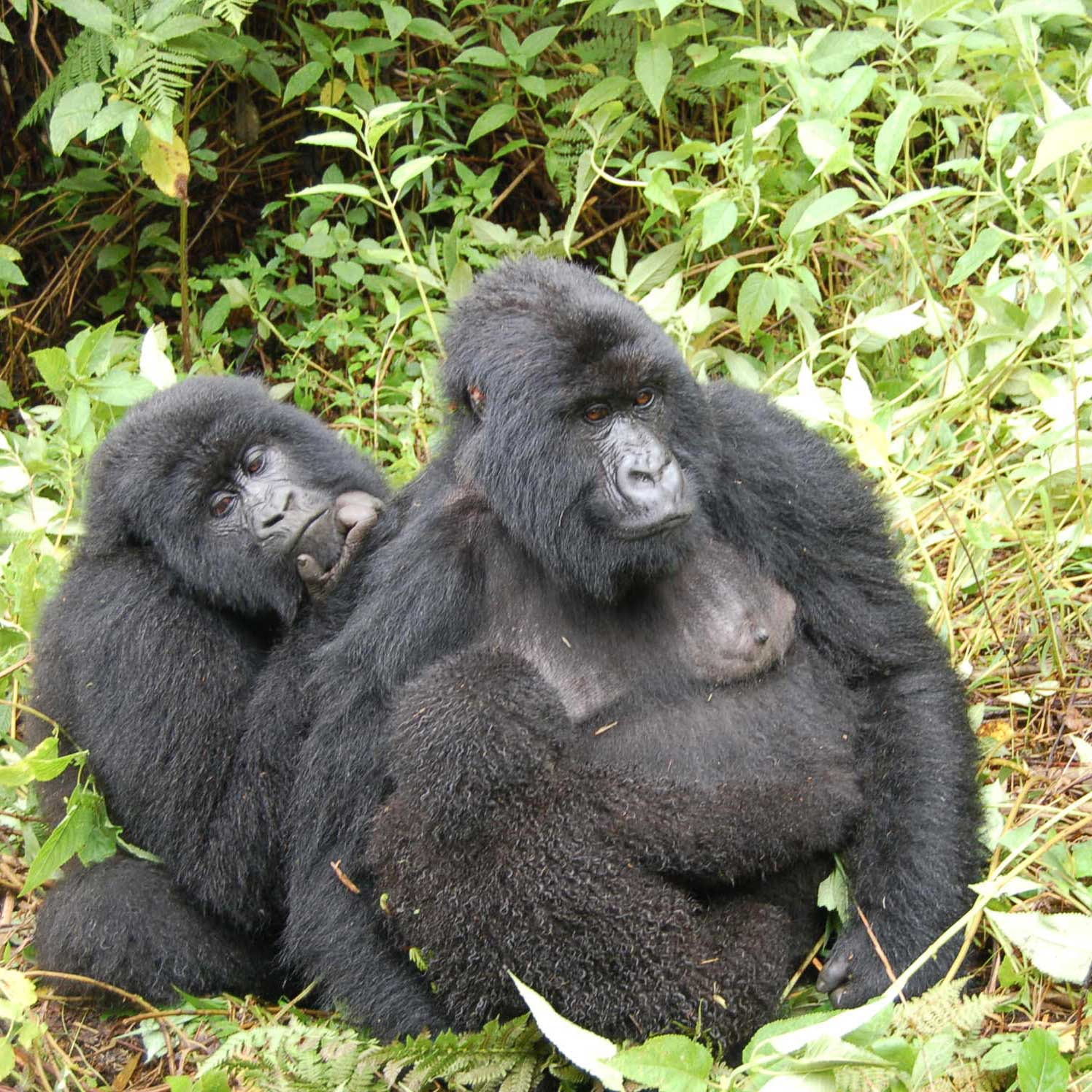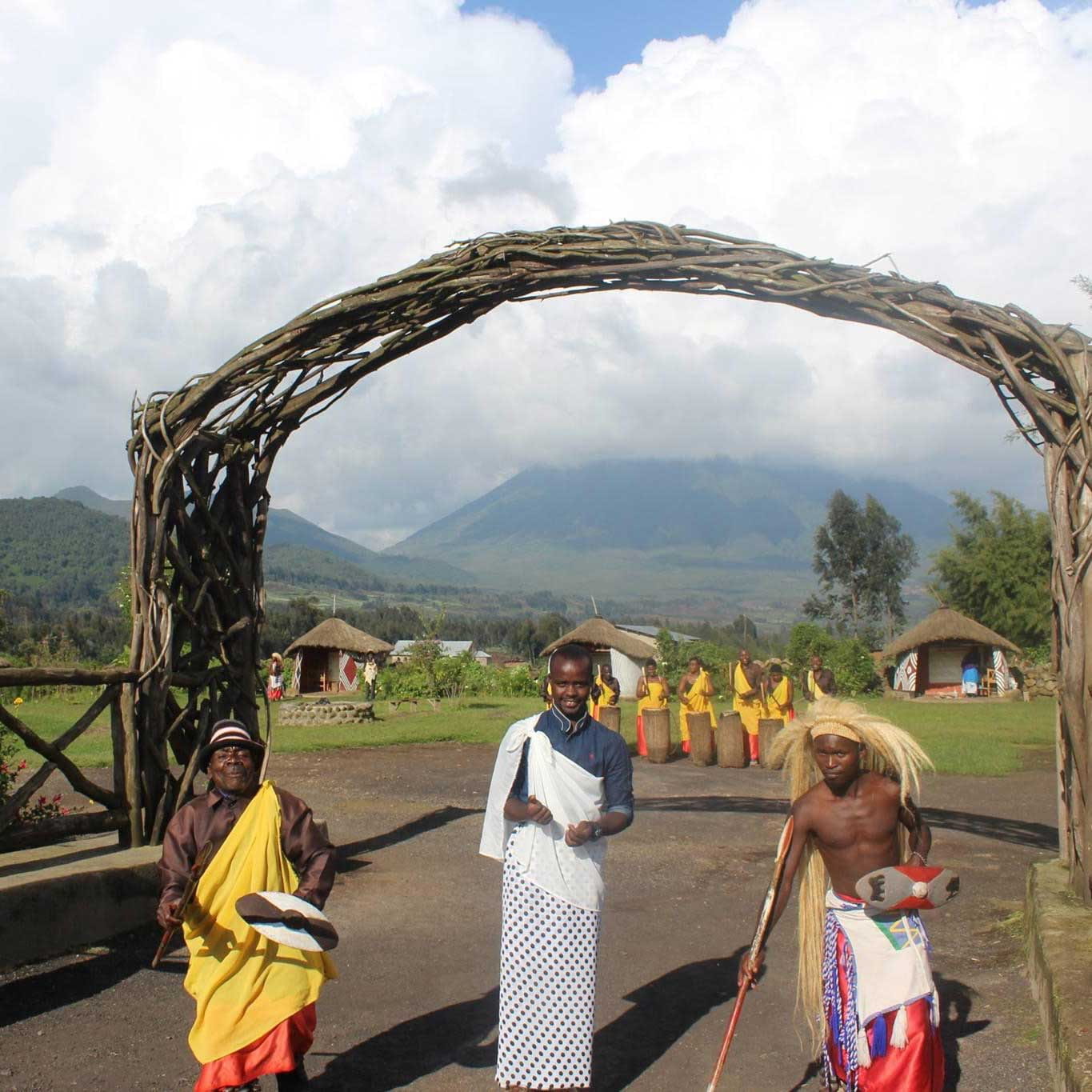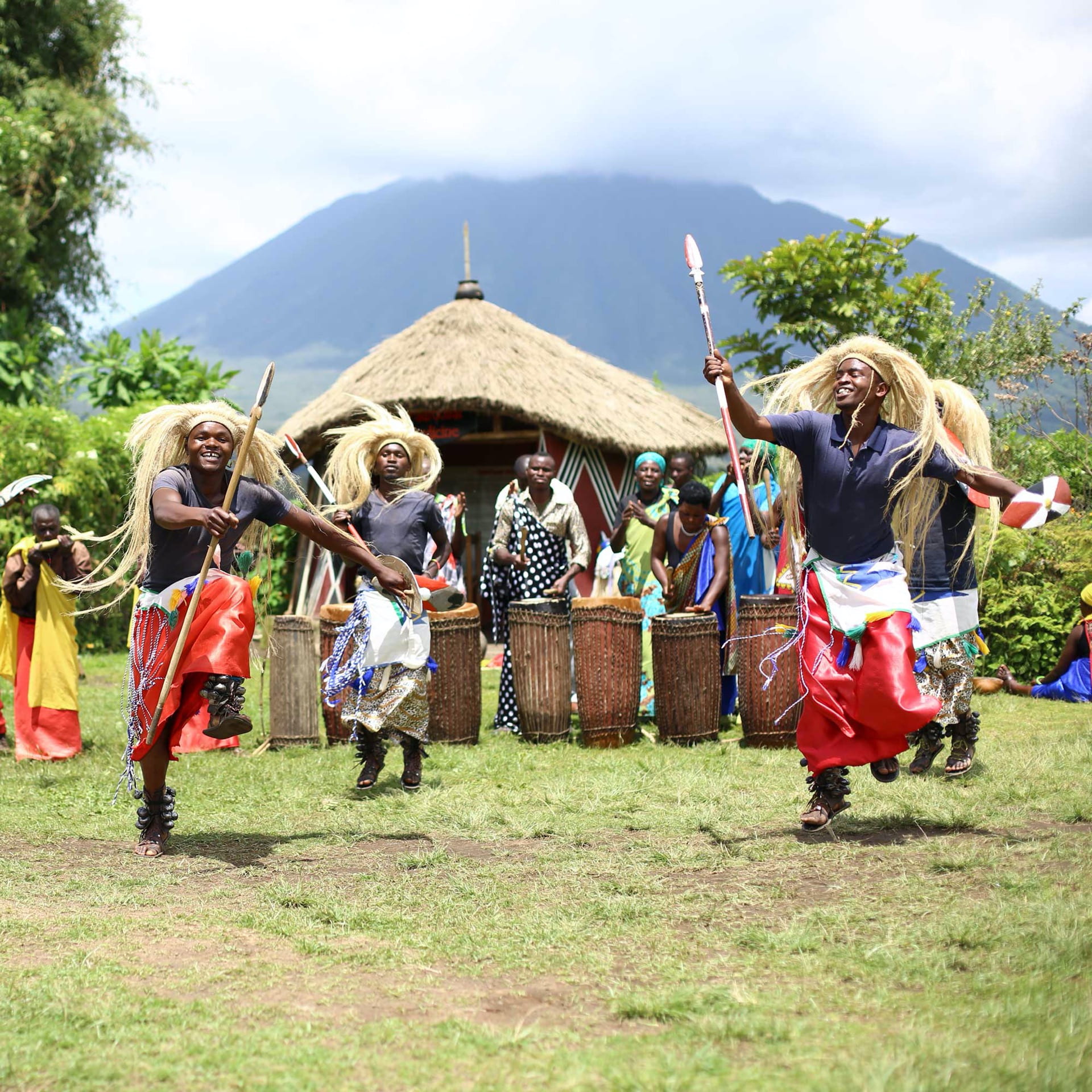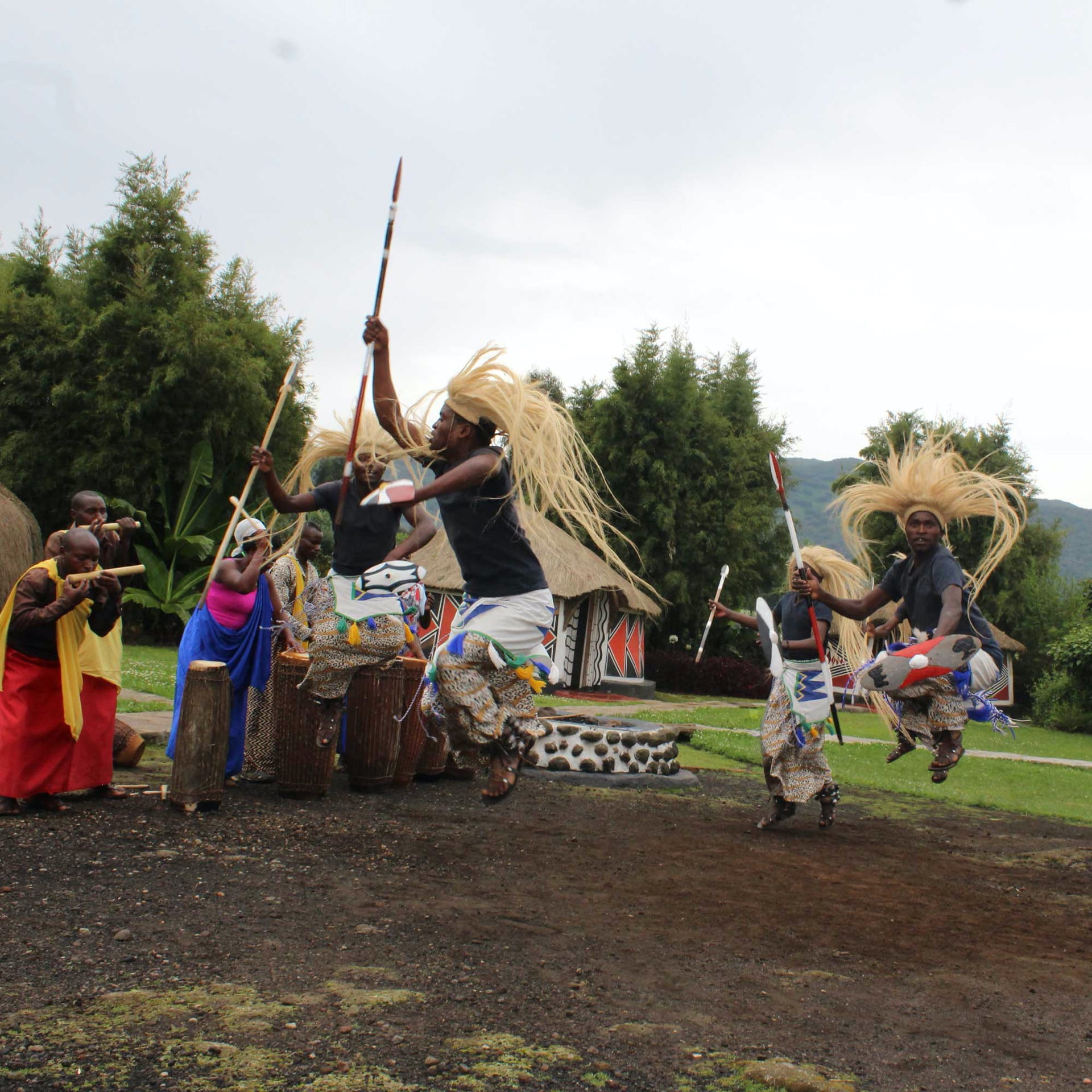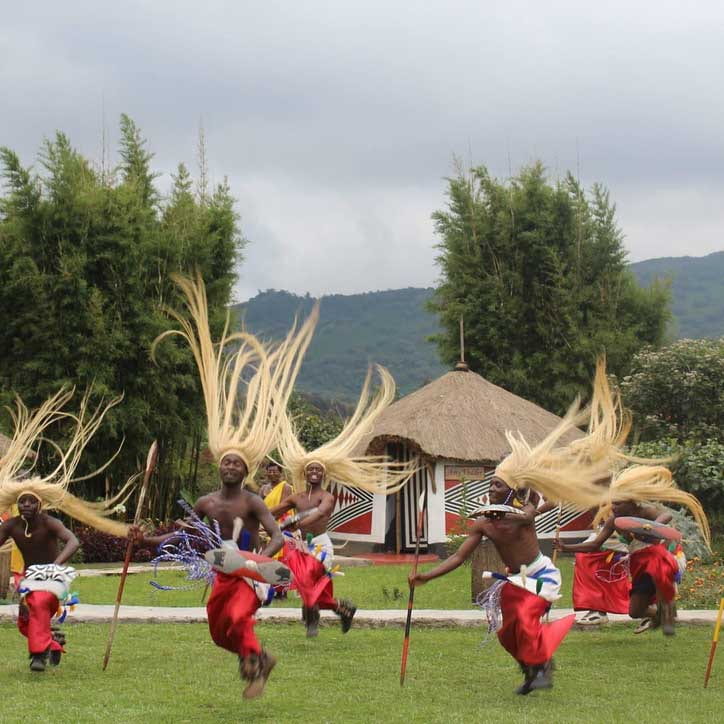Protecting mountain gorillas by empowering people
Mountain gorillas are an endangered species. Pressure on the gorillas has increased in recent years due to civil conflict, poaching, and humans moving into their habitat. Thanks to conservation efforts, however, the number of mountain gorillas has actually been increasing.
Very little mountain gorilla habitat remains, and over half of the wild mountain gorillas live in three adjacent national parks at the intersection of Rwanda, Uganda, and the Democratic Republic of Congo. The parks, known collectively as the Greater Virunga Transboundary Landscape, are considered by researchers to be one of the most valuable ecological preserves in the world.
Despite their successes, the parks and gorillas face threats from local residents. The people who live adjacent to the parks traditionally have not supported the parks’ conservation goals or respected the parks’ boundaries.
When Edwin Sabuhoro worked as a ranger in Rwanda’s Volcanoes National Park in the Virunga, he saw local villagers as a problem. Today, as assistant professor of recreation, park, and tourism management at Penn State, Sabuhoro collaborates with local communities in the region to build sustainable livelihoods for the residents and promote the conservation of gorillas and the other natural resources in the parks.
A troubled legacy
When European nations colonized Africa during the 19th and 20th centuries, they came to view African lands as the property of the European nations rather than the people who lived there. In the early-to-mid-20th century, the European nations established national parks and other preserved lands, often as places for wealthy Europeans to hunt big game. The parks were given names like “King Albert National Park” after monarchs from the nations that established them.
The people who had inhabited that land for centuries suddenly no longer had access to it. Hunters became ‘poachers’ with the stroke of a pen on a different continent. Gathering firewood for cooking became a crime. For many people who lived in or near these parks, their only means of survival were outlawed. Many local residents came to feel that the parks benefited rich foreigners but did not add value to the lives of the local community, and this mindset has been passed down to their descendants.
“When people learn about the problems these parks face, some blame the local residents,” said Sabuhoro. “But in order to understand residents’ lack of support for the parks, one must understand the context of how the parks were created and managed.”
Today, local residents who live in poverty often engage in illegal activities in the parks, including poaching, fuelwood gathering, plant gathering, and water gathering. Over a recent nine-year period, rangers in one of the parks counted more than 35,000 illegal acts. Troublingly, the number of illegal acts is increasing. Snares that are illegally set to capture game in the parks sometimes critically injure gorillas, and fires that are used to harvest honey sometimes burn out of control, destroying habitat and harming wildlife.
“
In order to understand residents’ lack of support for the parks, one must understand the context of how the parks were created and managed.
– Edwin Sabuhoro
”
Author
Aaron Wagner
Benefits for local residents
Traditionally, parks have been protected using a punitive ‘fines and fences’ approach. In recent years, governments and nonprofit organizations have recognized that local residents must benefit from the parks if they are going to value the parks and conservation. The presence of mountain gorillas means that—in a non-COVID-19 year—thousands of foreigners visit the park annually for gorilla trekking, injecting millions of dollars into the economy. Most of these funds are collected by the national governments who manage the parks.
Benefits to local communities fall into two categories: direct and indirect. Direct benefits place money into the pockets of local residents. Jobs as tour guides, jobs at hotels/lodges, and markets for crafts provide direct financial benefits. Indirect benefits arise when government revenue from tourism is used to improve infrastructure in the region. Schools, roads, and medical clinics are common examples of indirect benefits.
Research indicates that direct benefits have a stronger impact on people’s respect for the park and support for conservation. Sabuhoro and his collaborators learned that—without an increase in direct benefits—indirect benefits can actually worsen problems like poaching.
“Our research has shown that building schools in an area with impoverished residents actually led to an increase in poaching,” Sabuhoro explained. “It is a good thing to have kids in schools, but that puts pressure on the family to get scholastic supplies, to pay school fees. People want to see their kids get educated, but they don’t have money beyond the free primary education to go to high school or university. This creates pressure for the household to get more money, and often the only way to do that is through poaching. We believe the same pressure applies to paying for health care when clinics are built, as well.”
Direct benefits, on the other hand, place economic power in the hands of the individuals. When a woman sells a basket to a tourist, she can dedicate her income to buying food, paying for medical care, or paying school fees depending on her family’s needs. Also, since she knows that the tourists who buy her wares visit the area because of the gorillas, her support for conservation is likely to increase as well.
These photos, taken by Sabuhorro in Rwanda and other African countries, depict natural resources and ways that locals can earn money in a tourism-based economy.
What works
Sabuhoro believes that the model of conservation must change to ensure an equitable and sustainable future in the region. The current management model follows a top-down approach. The government makes management decisions, collects the vast majority of the revenue, and shares a small percentage of the revenue with the local communities through infrastructure projects that are selected and executed by the government. This results in a system that does not always address local people’s most pressing needs and can often lead to people feeling disconnected from the parks and their mission.
Conservation and local communities can thrive when a bottom-up model is adopted, according to Sabuhoro. In this model, the ideas for management and allocation of funds are generated by members of local communities. When local residents feel ownership of the strategies and policies, research shows that they are more inclined to support policies and conservation.
Sabuhoro also believes that a working model for the region’s economy already exists. Private initiatives have developed ways to economically empower individuals and improve their support for conservation. Community-owned lodges provide places where tourists can stay in local villages. Some villagers can work at the lodge, some can grow food to sell at the lodge, some can sell crafts to the tourists, and some can perform traditional dances for a fee. In this way, many households can be lifted out of poverty.
“If we channel the revenue sharing money into these programs,” Sabuhoro said, “we will see a huge impact on people’s quality of life and support for conservation.”
Sabuhoro did not always believe in this approach, but through scholarship, research, and experience, he came to understand what the villagers could contribute to conservation efforts.
“When I was a younger man, I worked as a ranger in Rwanda’s Volcanoes National Park,” Sabuhoro explained. “I led the tourism program, and I was working to protect the park and my gorillas. So, I had my rangers trying to protect the park using guns. I never, through that time, tried to understand the community. I saw them as the problem.
“When I left the park service and started to work with the community, I was shocked to see the knowledge, information, and understanding that the communities have. I knew that, if we tapped into that knowledge, it would make a huge difference. Since that time, I have relied on the community to lead, and I have supported them. This is the way to save the gorillas and the people.”
Photo Credits
Photos in the story – Credit Edwin Sabuboro
Photo 5 in the gallery – Vadim_Nefedov via Getty Images
Photo footer – Freda Bouskoutas via Getty Images
Can Parks Reduce Inequity?
Parks offer space for physical activity, enjoyment of nature, connection with other people, and wildlife habitat. Andrew Mowen of recreation, park, and tourism management examines how parks can also help address social and racial inequities.
Author
Aaron Wagner
What works
Sabuhoro believes that the model of conservation must change to ensure an equitable and sustainable future in the region. The current management model follows a top-down approach. The government makes management decisions, collects the vast majority of the revenue, and shares a small percentage of the revenue with the local communities through infrastructure projects that are selected and executed by the government. This results in a system that does not always address local people’s most pressing needs and can often lead to people feeling disconnected from the parks and their mission.
Conservation and local communities can thrive when a bottom-up model is adopted, according to Sabuhoro. In this model, the ideas for management and allocation of funds are generated by members of local communities. When local residents feel ownership of the strategies and policies, research shows that they are more inclined to support policies and conservation.
Sabuhoro also believes that a working model for the region’s economy already exists. Private initiatives have developed ways to economically empower individuals and improve their support for conservation. Community-owned lodges provide places where tourists can stay in local villages. Some villagers can work at the lodge, some can grow food to sell at the lodge, some can sell crafts to the tourists, and some can perform traditional dances for a fee. In this way, many households can be lifted out of poverty.
“If we channel the revenue sharing money into these programs,” Sabuhoro said, “we will see a huge impact on people’s quality of life and support for conservation.”
Sabuhoro did not always believe in this approach, but through scholarship, research, and experience, he came to understand what the villagers could contribute to conservation efforts.
“When I was a younger man, I worked as a ranger in Rwanda’s Volcanoes National Park,” Sabuhoro explained. “I led the tourism program, and I was working to protect the park and my gorillas. So, I had my rangers trying to protect the park using guns. I never, through that time, tried to understand the community. I saw them as the problem.
“When I left the park service and started to work with the community, I was shocked to see the knowledge, information, and understanding that the communities have. I knew that, if we tapped into that knowledge, it would make a huge difference. Since that time, I have relied on the community to lead, and I have supported them. This is the way to save the gorillas and the people.”
Photo Credits
Photos in the story – Credit Edwin Sabuboro
Photo 5 in the gallery – Vadim_Nefedov via Getty Images
Photo footer – Freda Bouskoutas via Getty Images
Can Parks Reduce Inequity?
Parks offer space for physical activity, enjoyment of nature, connection with other people, and wildlife habitat. Andrew Mowen of recreation, park, and tourism management examines how parks can also help address social and racial inequities.
Author
Aaron Wagner




